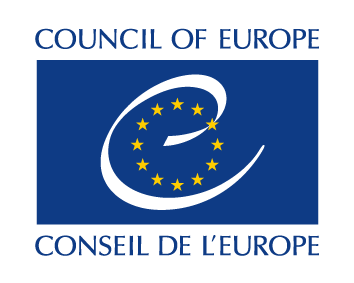Climate litigation and what follows – Putting climate litigation outcomes into practice
Author: Laura Hildt
Young people have played an important part in climate litigation. While bringing a case is a major endeavour, there are other, more accessible and local ways to make use of climate litigation. This article is the start of a series that aims to provide an overview of how to do so.
Strategic climate litigation is on the rise with more and more cases providing reasons to celebrate and bringing hope for stronger climate measures. Yet, after initial celebrations of a successful outcome, attention often seems to shift away again when actually the judgment is only the start to the change that needs to follow.
‘Strategic’ litigation can be defined as cases where the motivation behind bringing the case goes beyond a specific problem of those bringing the case but aims to lead to a broader societal shift. However, this broader societal shift does not come through a successful judgment alone but through the implementation thereof. To ensure the full success of such cases, attention must therefore be put on the steps that follow. Within that process, there are opportunities for youth involvement to ensure that the principles coming out of climate litigation are integrated at all levels of decision-making. This article provides an overview of the implementation steps and participation opportunities therein.
Major legal developments through climate litigation
Different strands of climate litigation are developing but the link between the climate crisis and human rights is a prominent element in many cases. An iconic European example thereof is the Dutch Urgenda case that established that by failing to adequately reduce greenhouse gas (GHG) emissions, the Dutch government failed to protect the right to life and private life under the European Convention of Human Rights. In a similar vein, six young people from Portugal have filed a complaint in front of the European Court of Human Rights, claiming that their right to health, life and to not experience discrimination are threatened by the insufficient action to tackle the climate crisis by 33 countries. The case is still ongoing and the youth claimants currently have until early February to respond to the defences of the 33 states.
A German Constitutional Court case of 2021, also partially brought by youth applicants, has led to a judgment that elements of the German climate law were unconstitutional because they did not adequately safeguard fundamental rights which must be interpreted in an ‘intertemporal’ manner. With that, the court fundamentally developed the principle of intragenerational equity as requiring a fair spread of opportunities across generations. In the climate context this means that using up the majority of the carbon budget now puts a disproportionate burden on younger generations who will then need to take much more drastic measures to stay within the carbon budget. As a result, more action at an earlier stage and a more transparent pathway towards climate neutrality is required.
The link between the climate crisis and human rights protection or the interpretation of the principle of intragenerational equity are major developments in the law. These principles should lead (and partially have already led) to broad shifts in the national climate policy but their reasoning can also be applied at a more local level and potentially also in other contexts.
Implementation steps
The outcomes and legal principles coming out of climate litigation do not in themself lead to the necessary changes. The judgment must be implemented, i.e. put into effect through policy measures and action on the ground. In other words, the judgment must trickle down to the source of the issue, that is, to GHG emission sources in the context of climate litigation.
At state level, this process may start with a national policy on a (higher) target for GHG emission reduction. This policy may also identify specific sectors or areas where these emission reductions should occur, e.g. in energy, transport, industry or agriculture and attributes responsibility to the respective ministries to ensure that these reductions happen. Maybe it also identifies some areas for carbon storage, e.g. some measures for ecosystem restoration or afforestation.
These national targets then need to be put into practice and who does that depends on the sector and the distribution of responsibility at national level. They can lead to national measures to regulate certain sectors but they can also be relevant considerations in regional and local level planning and decision-making processes on e.g. infrastructure planning, the designation of protected areas or decisions relating to industrial plants.
Ensuring the proper follow-up and action on the ground
Setting targets is one thing, reaching them is another as past examples of missed climate and biodiversity targets demonstrate.
While there may be opportunities to bring further legal action to enforce a judgment that is not being implemented properly (a second complaint has just been submitted in Germany and Urgenda is also considering another case in the Netherlands), this takes time and may only be possible once it is clear that a target has not been reached, i.e. after the deadline set, or once it is so obvious that it will not be possible to reach that target in the time left to do so. However, with the climate and biodiversity crisis in full blow, we do not have time to run down the clock in that way.
Therefore, it is crucial to ensure that the obligations coming out of climate litigation are properly implemented from the start. One way to do so is to make use of the available tools to participate in planning processes at all governance levels, reminding decision-makers of these obligations wherever possible.
Participation opportunities
For decisions affecting the environment, the Aarhus Convention, an international law treaty, establishes obligations to ensure adequate public participation in decision-making processes, in line with the objective of the Convention which is “to contribute to the protection of the right of every person of present and future generations to live in an environment adequate to his or her health and well-being” (Art.1).
In EU law, there are two main EU Directives on planning procedures which include provisions on public participation requirements: the Environmental Impact Assessment Directive and the Strategic Environmental Assessment Directive. In addition, there is a range of sectoral legislation with specific public participation requirements, e.g. the Water Framework Directive for river basin management plans or the Industrial Emissions Directive for permits.
These planning and related participation obligations apply to a range of different projects, relating to e.g. the construction of a motorway, large-scale water abstraction or power stations. Depending on the characteristics, location and impact of the project, an Environmental Impact Assessment (EIA), a process to ensure that the environmental implications of a project are taken into account before decisions are made, may also be required for a range of other projects, such as intensive livestock installations, urban development projects, the extractive industries and so on.
Many of these projects have significant impacts on the climate and the environment more broadly. Public participation processes are an opportunity to ensure that climate considerations and the principles coming out of successful climate litigation are considered. While there is no obligation to change the planning accordingly, points made during public participation processes must be heard and taken into account. These therefore provide great opportunities to bring a youth dimension into the processes, contributing climate arguments where they may not be on the radar of decision-makers, informed by climate litigation principles, coupled with higher moral weight and energy into these processes.
In future articles, we will explain how these processes work in practice, breaking down the law to provide practical guidance and examples on how to get involved to make the most out of successful climate litigation.



 YEE aims to unite environmental youth non-profit organisations in Europe in order to enhance international cooperation, increase knowledge about the climate crisis, raise awareness of environmental problems and to strengthen participation of youth in environmental decision-making.
YEE aims to unite environmental youth non-profit organisations in Europe in order to enhance international cooperation, increase knowledge about the climate crisis, raise awareness of environmental problems and to strengthen participation of youth in environmental decision-making.




